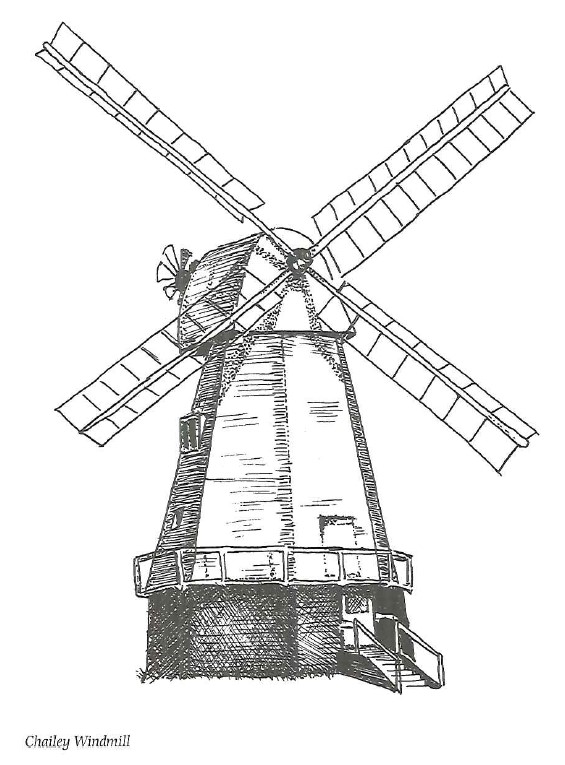For years people scoffed at ‘The Beast of East Chiltington’. But still the sightings continued in the countryside around the village and beyond of a black creature too large to be a domestic cat. It took modern technology – and a slice of luck – to finally silence the doubters in 1998.
East Chiltington resident David Ward-Streeter captured the beast on video, in a field just 200 yards from his home. The four-minute sequence convinced all who saw it that this was no pussy cat – big, black and powerful. A puma, in fact. David was bathing his children and happened to have the camera nearby when the beast appeared. Dusk was falling but the results were spectacular. The puma prowled quietly in the field, then it effortlessly pounced on something, a rabbit or a mouse, which it worried and possibly ate. After that it seemed to sense it was being observed and disappeared through a hedge.
Where did it come from? The theories were numerous, from private zoo escapee to
fugitive from an airport consignment of wild animals. The Sussex Express carried stills from the puma video after the story broke and attracted a massive response from amazed readers. The general opinion was that “The Beast’ should be left in peace. And so he has been.
One character stands out vividly in the landscape of a history which spans nearly 1,000 years. Susannah Stacey, better known as Grandma, was by any measure a remarkable Woman – cook and counsellor, friend to the poor and the sick, a healer through strange herbal potions. She was a curious mixture of well-bred Victorian lady and white witch.
The daughter of a wealthy Surrey family, she ran away at the age of 19 to marry farmer Mr William Stacey, a widower with five children, and her home became East Chiltington’s Stantons Farm. The rest of her life seems to have been devoted to the people of the hamlet and to the poor who would call at her door. Stantons became a place of pilgrimage for those who were troubled in mind or body and Grandma’s advice and medicines were never denied them. She created a herb garden famous throughout the county and the products of her stills would be sought after by doctors for miles around. She had a herbal remedy for every human ailment from lumbago to deafness and was just as famous for her cures of domestic animals. Several outbreaks of the dreaded foot and mouth disease in cattle were believed to have been thwarted by her powers, and she could soothe a frenzied horse or pain-wracked dog by the touch of her hand or the sound of her voice.
Entertainment must have been on a lavish scale during the reign of the wise woman of Stantons (always addressed by her husband as ‘ma’am’) and many of her countless notes of household ‘receipts’ have survived. Not many present-day households could budget for culinary creations, which require the pounded flowers of a peck of cowslips, pickled nasturtium leaves or the copious quantities of wine and spirits often involved.
Some of the ingredients may have been unusual, but the result was no doubt delicious. This was Grandma’s recipe for Herb Pie:
“Pick two handfuls of parsley, half the quantity of spinach, two lettuces, mustard and cresses, a few leaves of burridge, and white beet leaves; wash and boil them a little; drain, press out the water; cut them small; mix and lay them in a dish, sprinkled with salt. Mix a batter with flour, two eggs well beaten, a pint of cream, and half a pint of milk, and pour it on to the herbs; cover with a good crust, and bake Or how about this foxglove concoction as a cure for deafness:
“Bruise in a marble mortar, the flowers, leaves and stalks of fresh fox-glove; mix the juice with double the quantity of brandy, and keep it for use. The herb flowers in June, and the juice will thus keep good till the return of that season. The method of using it is to drop one drop in the ear every night, and then moisten a bit of lint with a little of the juice, put it also in the ear, and take it out next morning till the cure be completed.’
Grandma died in 1893, but continued to be a source of help from beyond the grave. During her lifetime she had planted banks of belladonna, or deadly nightshade, in Cripps Plantation on the Downs above East Chiltington. As lethal as the name suggests if the plant is swallowed, she cultivated it for making belladonna plasters to ease various pains such as lumbago. The First World War brought a tremendous demand for the plant, its external application causing dilation of the pupils of the eyes making examinations and operations easier, and Grandma’s flourishing wild garden of the stuff found a new role.
The village, clustered around its 12th century church, has not changed much since Grandma’s era. The hovels, which were home to many of her patients have gone and the village school is now a private house (though the owners have not removed the Victorian sense of propriety with separate sections for boys and girls still clearly marked on the walls).
The Jolly Sportsman has undergone something of an identity crisis over the years. What does the name conjure up? The painters of the pub sign have at various times depicted a jovial old gentleman, pockets bulging with game; another aged yokel lustfully pursuing a girl who looked young enough to be his great-granddaughter; and latterly a jockey obviously mounted on a winner.
